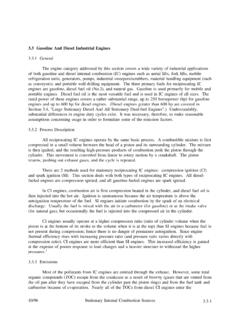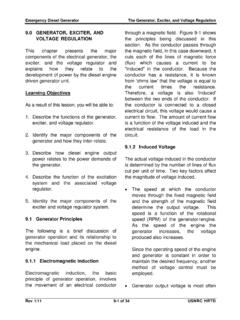Transcription of Energy Snapshot Bahamas - NREL
1 Energy SnapshotBahamasThis profile provides a Snapshot of the Energy landscape of the Commonwealth of the Bahamas a country consisting of more than 700 islands, cays, and islets of which only 28 are populated. Located north of Cuba, with the Turks and Caicos Islands to the southeast, the Bahamas has an average electricity cost of $ per kilowatt-hour (kWh), in line with the Caribbean regional average of $ Like many island nations, the Bahamas is almost 100% reliant on imported fossil fuels, leaving it vulnerable to global price fluctuations that directly impact the cost of Sector DataThe Bahamas Electricity Corporation (BEC) controls 438 megawatts (MW) of generation capacity, while Grand Bahama Power Corporation (GBPC) controls the remain-ing 98 MW. Generation is currently fueled by all imported petroleum with a mix of diesel ( ) and heavy fuel oil ( ), totaling 1,930 gigawatt-hours (GWh) for the entire country.
2 High generation costs have led to relatively high electricity tariffs, particularly for industrial consumers. The fuels used for generation result in potential electricity price volatility for all rate payers. Population321,834 Total Area13,880 square kilometersGross Domestic Product (GDP)$ billion dollars (USD)Share of GDP Spent on Fuel and ImportsElectricity Per Capita$32,000 USDU rban Population Bahamas Clean Energy Goal:30% by2030 Government and Utility OverviewGovernment AuthorityMinistry: Ministry of the EnvironmentKey Figure: The Honorary Kenred DorsettDesignated Institution for Renewable EnergyNoneRegulatorUtilities Regulation Competition AuthorityUtilitiesName: Bahamas Electricity CorporationGovernment- owned corporation; currently in reform process, which will split the company into two companiesServes 95,000 customers in New Providence and the Family Islands, providing 85% of the electrical generation across the country.
3 Name: Grand Bahama Power CorporationPublic-private corporation including foreign-owned utilitiesServes 19,000 customers from the island of Grand Bahama from West End to Sweetings Cay. Majority-owned by Emera Inc. fifl ffffi flDiesel and Heavy Fuel Oil Gas , Small Lighting , Large Generation MixEnergy Consumption by Sector Based on average global generation costs for renewable technologies, electricity rates in the Bahamas offer an oppor-tunity for renewable Energy to diversify the fuel portfolio and reduce rate volatility. The islands that comprise the Bahamas have moderate poten-tial for variable renewables wind and solar but limited or no potential for baseload renewables such as hydropower or geothermal. Interconnecting the Bahamas 16 isolated island grids would be necessary to transport power generated from renewable Energy across the country. Clean Energy Policy EnvironmentThe Government of the Bahamas has discussed plans to reform its Energy sector through a partial-privatization of BEC and by introducing regulation-by-contract principles to meet the capacity for future growth, implementing more economically viable renewable Energy sources, and modern-izing the Energy sector.
4 There has been effort made related to increasing Energy effi-ciency in the country. As recommended in the Inter-American Development Bank (IDB) Country Strategy for the Bahamas , the benefits of Energy efficiency were communicated to residents in low-income communities, and homeowners were offered incentives for installing Energy -efficient lighting. In addition, a Bahamas National Energy Policy was established in response to IDB s recommendations, which outlined standards for Energy -efficient buildings. Electricity Sector OverviewTotal Installed Capacity438 MW (BEC); 98 MW (GBPC)Peak Demand234 MW (BEC); 74 MW (GBPC)Total Generation1,641 GWh (BEC); 289 GWh (GBPC)Renewable Share< %Transmission & Distribution Rate100% (GBPC) (Overall)Average Electricity Tariffs (USD/kWh)Residential$ $0. 374 IndustrialNoneExisting Policy and Regulatory FrameworkRenewable EnergyFeed-in Tariff Net Metering/Billing Interconnection StandardsRenewables Portfolio Standard/Quota Tax Credits Tax Reduction/Exemption Public Loans/Grants Green Public ProcurementEnergy EfficiencyEnergy Efficiency StandardsTax CreditsTax Reduction/ExemptionPublic DemonstrationRestrictions on Incandescent BulbsAppliance Labeling StandardsTargetsRenewable EnergyEnergy Efficiency In Place In DevelopmentWhile renewable Energy policies such as net metering and feed-in-tariffs have been debated, there are limited policy support mechanisms in place to drive the development of renewable Energy projects in the Bahamas .
5 Energy Efficiency andRenewable Energy ProjectsWith Energy -related costs estimated at 15% to 20% of annual operating budgets for small- and medium-sized hotels in the Bahamas , the Bahamian hotel industry launched a significant Energy efficiency initiative in 2013 in partnership with the Government of the Bahamas to reduce Energy - related costs. The initiative aims to conduct Energy audits at participating hotels, recommend Energy efficiency improvements, and develop financial proposals to obtain funding for terms of renewable Energy , despite having resource potential, economic conditions for solar photovoltaics and solar water heaters, and efforts in 2008 and 2009 to introduce renewable Energy , the market is still largely untapped. In 2008, the Government of the Bahamas incentivized solar technologies by reducing the import duties from 42% to 10%. In 2009, GBPC explored wind and biomass resources and BEC considered 13 bids for renewable Energy projects, but none have materialized yet and currently the Bahamas does not have any installed renewable Energy .
6 In the next decade, the Bahamas aims to have solar water heating systems on 20% to 30% of all households, which has the potential of adding 200 GWh of heat for water per year. Opportunities for Clean Energy TransformationAccording to preliminary assessments, wind and solar resources offer the greatest potential for renewable Energy development in the Bahamas . The Bahamas has one of the strongest economies in the region with $ million being invested in the renewable Energy sector between 2006 and 2012. However, the government indicated that it intends to delay any movement on renewable Energy implementation until the BEC reform process is complete. High and volatile electricity tariffs, specifically for indus-trial consumers, offer an opportunity for fuel savings from renewable Energy installations once capital costs have been paid back. Reduction of electricity rates has been highlighted as a priority area by the government.
7 Because the Bahamas produces no fossil fuels, an increase in domestic Energy production from renewables could reduce price volatility and the potential for supply disruptions, resulting in more self-sufficiency and stable Energy costs over the long : 60 MW Installed Capacity: 0 Potential: 0 Installed Capacity: 0 GeothermalPotential: 0 Installed Capacity: 0 HydropowerPotential: 200 MW Installed Capacity: 0 WindOceanPotential: Unknown Installed Capacity: 0 BiomassPotential: 1 MW Installed Capacity: 0 Renewable Energy Status and PotentialSourcesThe information provided in this fact sheet was developed using the following Electricity Corporation, Company Profile: Hotel & Tourism Association, Energy Cost Rise Achilles Heel For Private Sector: Caribbean News Now, Bahamas trails Caribbean in renewable Energy index: Caribbean Renewable Energy Development Programme, A Review of the Status of the Interconnection of Distributed Renewables to the Grid in CARICOM Countries: Sustainable Energy Roadmap, Phase 1: (1).
8 Pdf. Central Intelligence Agency, World Factbook, Bahamas : Climatescope 2013, Multilateral Investment Fund (FOMIN) and Bloomberg New Energy Finance (BNEF), 2013): Watch, Value of Oil Imports Data for All Countries: Energy Information Administration, Frequently Asked Questions, How much electricity is lost in transmission and distribution in the United States? : Grand Bahama Power Company, About GPBC: Inter-American Development Bank: International Renewable Energy Agency, Renewable Energy Country Profiles Caribbean: Organization of American States, Energy Policy and SectorAnalysis in the Caribbean 2010-2011: Distribution of Population by Island 2000 And 2010 Censuses: Regulation by Contract: A New Way to Privatize Electricity Distribution?: Bahamas National Energy Policy, Second Report of the National Energy Policy Committee (September 2010): The Freeport News-Reforming the Energy sector of the Bahamas : The Government of the Bahamas , Cabinet Ministers: Tribune 242, BEC s 170% Fuel Charge Rise Masks Operating Woe: 25becs-170-fuel-charge-rise-masks-operat ing-woe/.
9 Tribune 242, No Reason To Delay Renewable Energy Until 2014: Energy Transition InitiativeThis Energy Snapshot was prepared to support the Energy Transition Initiative, which leverages the experiences of islands, states, and cities that have established a long-term vision for Energy transformation and are successfully implementing Energy efficiency and renewable Energy projects to achieve established clean Energy the initiative, the Department of Energy and its partners provide government entities and other stakeholders with a proven framework, objective guidance, and technical tools and resources for transitioning to a clean Energy system/economy that relies on local resources to substantially reduce reliance on fossil by the National Renewable Energy Laboratory ( nrel ), a national laboratory of the Department of Energy , Office of Energy Efficiency and Renewable Energy ; nrel is operated by the Alliance for Sustainable Energy , February 2015 Page 1 photo from iStock 41158512; page 4 photo from iStock 29878236














